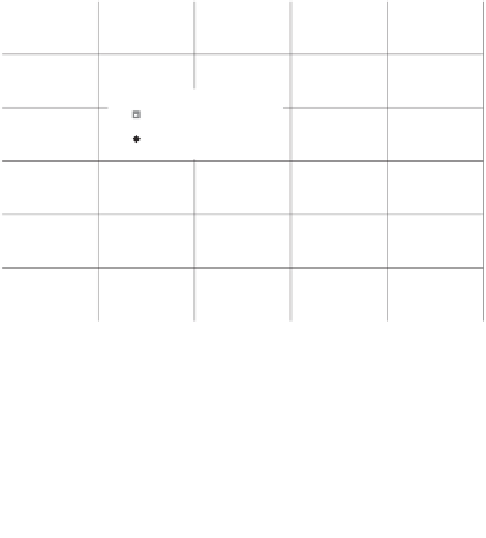Environmental Engineering Reference
In-Depth Information
The most common units for absolute humidity are grams
per cubic meter with values ranging from 0 to 30 g of water
per cubic meter of air. Absolute humidity changes as air
pressure changes.
nonlinearly with temperature. Changes in relative humid-
ity may occur because the saturated water vapor pressure
increases with temperature. Temperature generally increases
toward noon each day and the relative humidity goes down.
2.3.3.3 Calculation of Saturated Vapor Pressure
Saturated vapor pressure becomes the reference for water
vapor gradients. Saturated vapor pressures are a function
of temperature and can be calculated using one of several
empirical equations such as those presented by Tetens (1930)
and Lowe (1977). The Tetens (1930) equation for saturation
vapor pressure as a function of temperature is as follows:
2.3.3.4 Calculation of Relative Humidity from Dew
Point
Relative humidity of an air-water mixture can be calculated
if the actual air temperature
T
and the dew-point temperature
t
d
are known. A number of equations have been proposed
to perform the conversion between dew point and relative
humidity.
There is a simple approximation that allows the calcula-
tion of relative humidity
h
r
based on the dew-point temper-
ature
t
d
and the dry bulb temperature
T
in degrees Celcius.
The equation is as follows:
0
.
6108 exp
17
.
27
T
T
u
air
vo
=
(2.27)
+
237
.
7
where:
5
T
t
d
h
r
=
100
−
−
(2.29)
u
air
vo
=
saturated vapor pressure, kPa, and
air temperature,
◦
C.
T
=
The equation is reasonably accurate as long as the relative
humidity is above 50%. The equation states that the relative
humidity changes by 5% for every 1
◦
C difference in temper-
ature between the dew point and the dry bulb temperature,
starting at 100% relative humidity.
The August-Roche-Magnus equation was developed for
the calculation of dew point when the specific relative humid-
ity and dry bulb temperature are known. This equation pro-
duces results that are essentially the same as those computed
using the Tetens (1930) equation.
The August-Roche-Magnus equation can be rearranged
and solved for relative humidity when the dew-point tem-
perature is known. The August-Roche-Magnus equation is
considered valid under the following conditions:
The Lowe (1977) equation for saturated vapor pressure as
a function of temperature is as follows:
u
air
vo
a
2
T
2
a
3
T
3
a
4
T
4
a
5
T
5
=
a
0
+
a
1
T
+
+
+
+
(2.28)
where:
u
air
vo
=
saturated vapor pressure, kPa,
o
C
T
=
air temperature,
a
0
=
0.6183580754,
a
1
=
0.0411427320,
a
2
=
0.0017217473,
a
3
=
0.0000174108,
a
4
=
0.0000003985, and
0
◦
C
<T <
60
◦
C
a
5
=
0.0000000022.
1%
<h
r
<
100%
0
◦
C
<t
d
<
50
◦
C
The saturation vapor pressures calculated by the above
equations are shown in Fig. 2.33. Relative humidity changes
120
100
80
Tetens (1930)
Lowe (1997)
60
40
20
0
0
20
40
60
80
100
Temperature,
°
C
Figure 2.33
Curve of saturation vapor pressure versus temperature.



































Search WWH ::

Custom Search